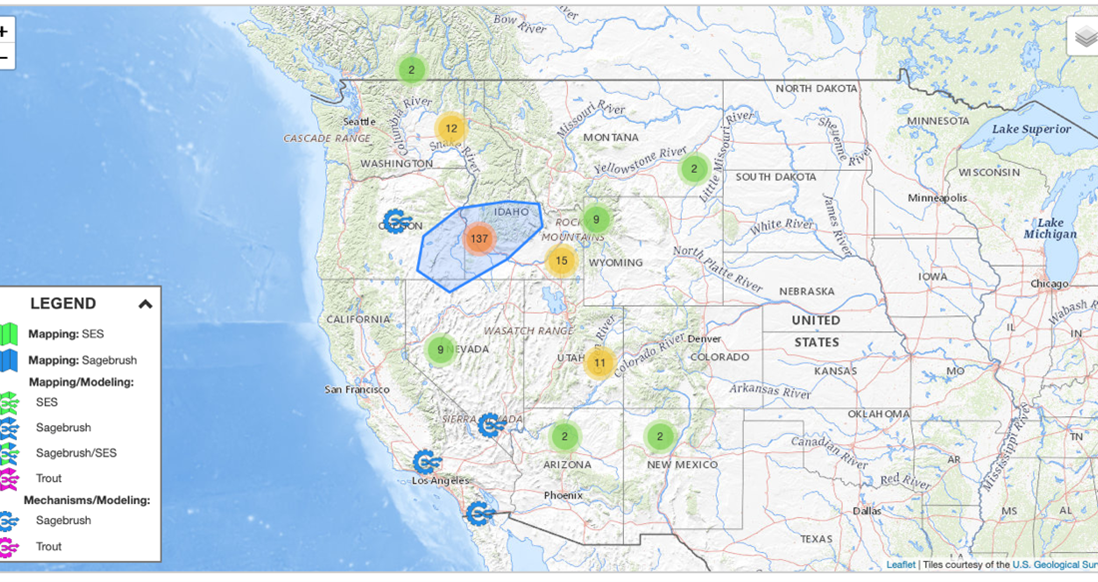
This work is part of an Established Program to Stimulate Competitive Research (EPSCoR) grant by the National Science Foundation, titled “Linking Genome to Phenome to Predict Adaptive Responses of Organisms to Changing Landscapes” (GEM3). The aim of this project is to understand the impacts of environmental and social change on Idaho’s landscapes, wildlife, and people. The overall focus of this grant is on the way in which genomes affect adaptive capacity in sagebrush ecosystems and Redband Trout habitat.
The GEM3 research components (Mechanisms, Mapping, and Modeling) are highly integrated and interdependent. Outputs produced by one component often serve as inputs elsewhere in the project. For example, new genetic data acquired by the Trout Mechanisms team will be used by the Modeling team to parameterize new agent based models. These interactions create a complex and temporally dynamic project structure.
Within a complex project such as GEM3, metadata compilation and data management is a highly integrated process. The Data Map includes over 200 research sites, searchable by research focus (i.e. trout, sagebrush, or social-ecological systems studies-SES), and by component (mapping, modeling, mechanisms). The Data Map includes multiple layers that show geographic areas and the boundaries where research is taking place within specific components. These layers include SES projects, Unmanned Aerial Systems (UAS) flights and data collection sites, Trout research and historical range, and Indigenous territories where research taking place. The Data Map also allows for viewing in either topographical map or satellite-based setting. Phase 2 of project will connect and compile internal data flow within the GEM3 project, and build web-based databases and repositories so that researchers can share collected data with project modelers and collaborators.
The GEM3 Interactive Data Map was developed to foster integration of metadata from multiple researchers and to leverage the scientific expertise from Idaho institutions. The map, which accommodates metadata submissions and host these submissions within a searchable database, utilizes best practices in metadata and data management that is accessible by the public.
